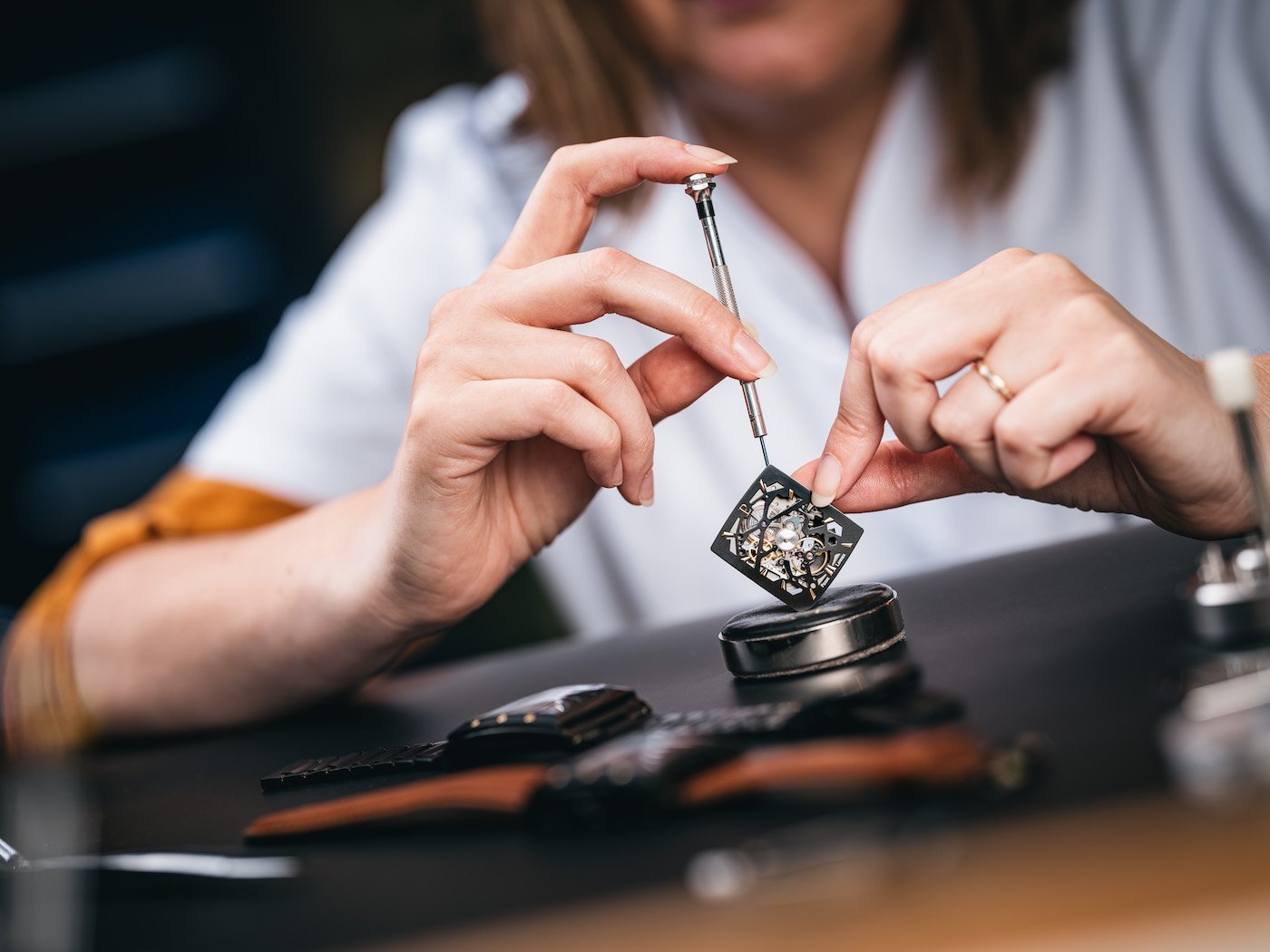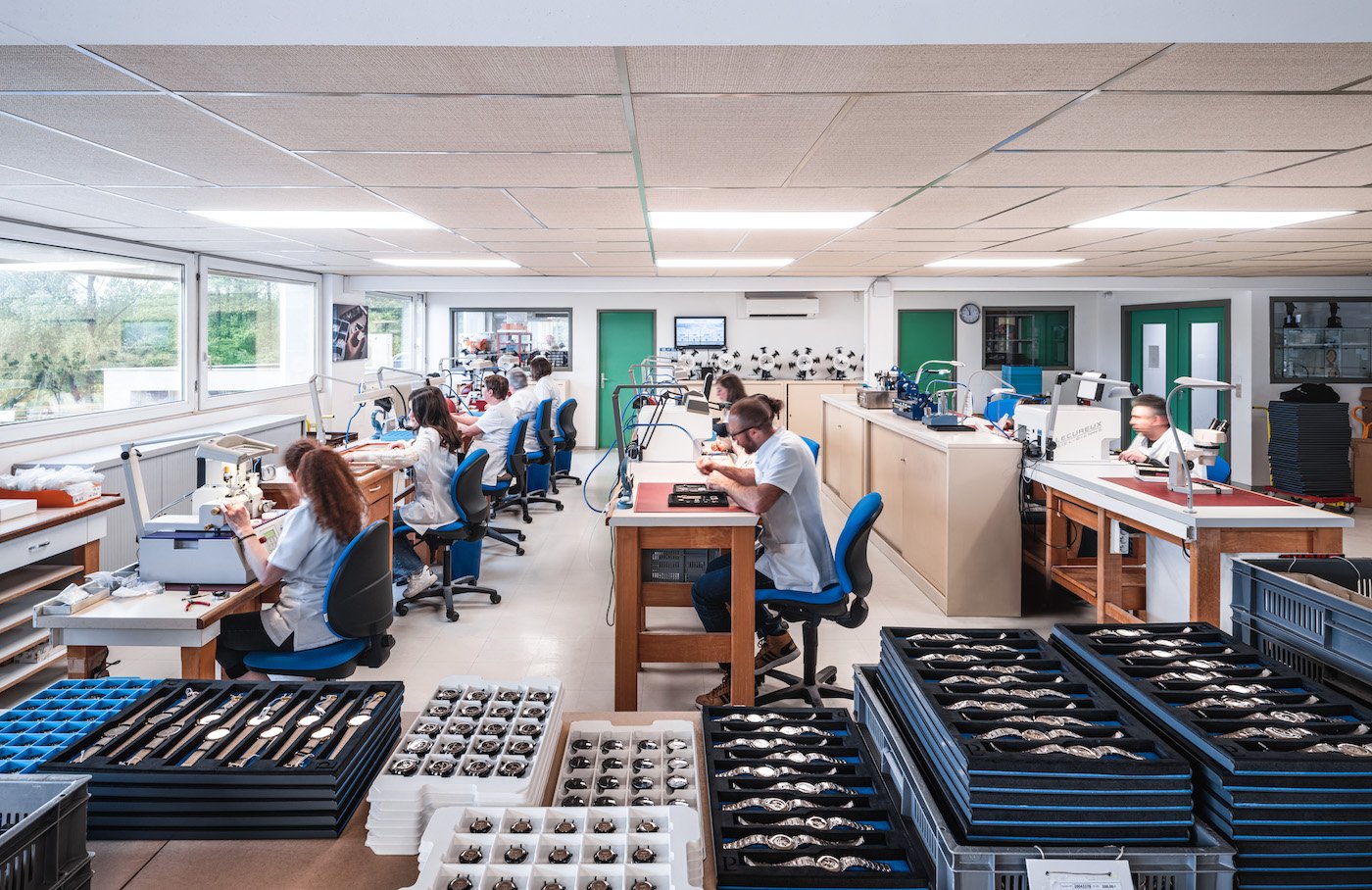he year is 1977 and the quartz crisis that began in the early years of the decade has yet to loosen its grip on the world watch industry. In Alsace, in north-east France, Jean-Paul Burgun is at the head of an office supplies company while his wife Béatrice, after a break to bring up the couple’s children, is ready to resume her career.
The pair set off around Europe in search of ideas for a new business venture. A stopover in Germany introduced them to Piratron digital watches. Enthused by what they had seen, the couple began importing and distributing Piratron in France but for Jean-Paul Burgun, this wasn’t enough. This design enthusiast and entrepreneur wanted his own brand.
That brand would be Pierre Lannier, established in 1977 in the couple’s dining room. The watches it sold were made in France, in the Haut-Doubs region, from French components and quartz movements by France Ebauches. The company expanded its activity to include assembly (in a workshop which the Burguns built in their garden!) before relocating in 1985 to Ernolsheim-lès-Saverne, a 40-minute drive from Strasbourg, where it is still based.
But the market evolved. Price wars raged. French-made components became harder to source in a sector dominated by Asian suppliers. For the brand to maintain its lowest price at €80, in 2001 it relocated assembly to a facility in Madagascar.
At the head of the business since 2015, Pierre Burgun, the couple’s son, recalls how “we were under pressure and had to adapt. We offshored part of production and significantly increased the proportion of Asian components. At that point, the share of French-made watches fell to less than 20 per cent.” Despite this, Pierre Lannier remained one of the top ten watch brands in France.
-

- Pierre Burgun, CEO, Pierre Lannier
This agility would serve the family firm well. As global market trends were reversed and interest in mechanical watches took off in the early 2000s, in 2010 the Burguns took the decision to relaunch production in France. “We gradually brought assembly operations back to France and increased our lowest retail price, at around €140,” says Pierre Burgun. “We were taking a risk but customers stayed loyal to the brand. So did our distributors and retailers. In 2022 65% of our watches were assembled in France and that percentage is increasing, reaching 75% in 2023.”
Automatic movements, sourced mainly from Miyota and Seagull, became a key component of the brand’s growth strategy as of 2018. As the brand expanded so did the share of automatic watches, reaching 40% of sales in volume and more than 50% in value in 2023.
The shuttering of business during the Covid pandemic offered time out for reflection. “French manufacturing and automatic movements were clearly a winning combination,” Pierre Burgun continues. “This sowed the seeds for a Pierre Lannier automatic watch with the maximum amount of French-made components. We went to Pequignet for the movement, La Pratique in Morteau for the hands and Sibra in Lyon for the straps. And that’s how the 1977 came about.”
-

- The 1977 limited edition signals the brand’s return to mechanical watches which are made in France.
All the components but one (the dial, from CadraTec in Switzerland) were made in France. Despite retailing at €1,977, well above the brand’s usual price range, this 500-piece limited edition was a success and set a clear direction for Pierre Lannier going forward.
“Our objective,” says Pierre Burgun, “is to develop a 1977 collection on this basis for launch in 2024 and double revenue within the next five years.” The movement for this new collection will be by France Ebauches (which was taken over in 2017 by Soprod, part of the Spanish Festina group). The 1977 will carry the Origine France Garantie mark, indicating that more than 51% of components are made in France. It should also support the brand in another aspect of its development strategy, which is to grow export sales.
From 25% of its revenue in 2019, exports fell to 10% in the wake of the Covid pandemic – creating an opening for growth on international markets. Pierre Lannier achieved 20% overseas sales in 2023 with an ambitious plan to bring this figure up to 50% over five years.
At a time when more and more brands are moving into higher price segments, Pierre Lannier has made strong and steady progress in the highly competitive market for affordable watches. In 2023 it sold over 300,000 watches and generated over €15 million in revenue.
The secret of its success? “Our capacity to adapt is a major strength,” Pierre Burgun answers. “We’ve always listened to what our customers and our partners want and have forged excellent relations. They are our greatest asset. The challenge now is export.” Pierre Lannier isn’t the only brand on a mission to propose genuinely French-made watches. The agility and humility of this family firm should stand it in good stead.


































